The Beginnings of the Catholic Church in Tonga Based on the writings of Fr Joseph Deihl SM, adapted by Fr Kevin Head SM Part 5
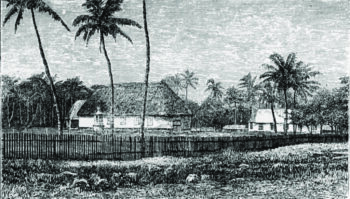
Church and Mission buildings of Maofaga
Based on the writings of Fr Joseph Deihl SM, adapted by Fr Kevin Head SM
Part 5
Poverty and Persecution
From their earliest days in Tonga, the situation in which the Catholic missionaries found themselves was dire. Apart from the persecutions they endured, they lived in abject poverty. In 1843, Fr Grange wrote, “We are far from despairing, but we lack one of the most indispensable elements of success, that which is strictly necessary to sustain the life of the missionaries. Alas! Our rations may suffice to prevent us from dying of hunger, but not to give us strength to go through the villages to search out and to instruct souls.”
Under an agreement between M. Du Bouzet (the Governor of Tahiti) in the name of Napoleon III and King George Tupou, religious equality was established in Tonga in 1855. While Catholicism was now free to develop after fourteen years of persecution, its growth would be plagued with difficulty, because, for twenty-five years, the Wesleyan missionaries had spread untruths about the Catholic faith in most of Tongatapu, Vava’u, Ha’apai and other islands.
The village of Maofaga was near to King George’s capital, Nukualofa. Maofaga was the ancient burial ground for Tonga’s high chiefs. As such, it was a sacred spot where enemies were obliged to act as friends and where there was a right of sanctuary. In the civil war of the late 1830s, Maofaga was allied to the village of Pea, and some of the chiefs had become Catholic. When they returned to Maofaga, they were harassed for being Catholic. When Pea was destroyed in 1852, a chief called Kolosio escaped. He fled to Tahiti on board the Moselle and returned to Tonga in 1855, bringing M. Du Bouzet with him. He was a good leader in Maofaga and assisted Fr Calinon, the first missionary living in Maofaga.
Fr Deihl wrote, “We cannot trace here the full history of Maofaga through the years, but suffice it to know that Maofaga was destined in time to become the chief centre of Catholicism in Tonga. Pea, with its fortifications, received and cradled it; Mua, through the prestige of its great chief, the Tui-tonga, gave it shelter and protected it after the sack of Pea; but Maofaga, in the person of its third missionary, after 16 years of labour there, was to become the residence of Tonga's first Vicar General -- Bishop Lamaze, 1879.”
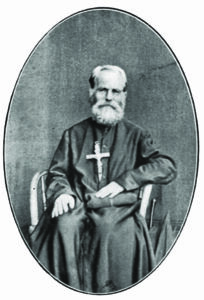
Fr (Joseph) Marin Breton SM
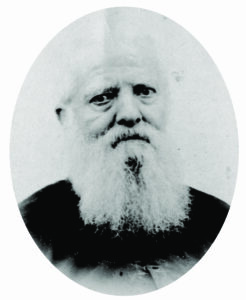
Fr Pierre Castagnier SM
Fr Victor Poupinel, the Society of Mary’s Visitor-General, arrived in Tonga in 1858. He brought with him orders from Bishop Bataillon, at that time in Europe, that a mission should be set up in Ha’apai. The Ha’apai Group is made up of many small islands surrounded by reefs. On 7 July 1858 Frs Calinon, Guitta and Poupinel reached Lifuka, the most important island. There were three Wesleyan ministers living there and the governor was Josias, loyal to King George Tupou. Josias refused the Catholic missionaries a place on the island, a breach of the convention of equality of 1855. The missionaries went back to Tongatapu.
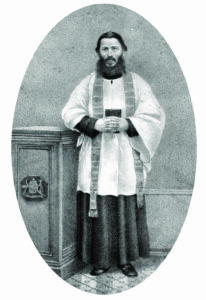
Fr Joseph Monnier SM
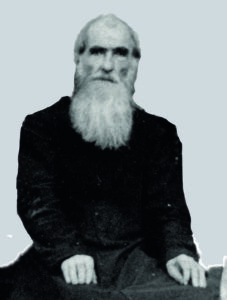
Fr Pierre Guitta SM
Frs Calinon and Guitta returned to Ha’apai in August 1858. After some time, Fr Calinon remained there alone. Fr Deihl wrote of him, “He did everything possible to gain the confidence of those among whom he laboured. He was a man with exceptional qualities, skilled in the use of the hammer, and the saw, and most clever in remedying the ills of the body. For these services the natives came to him in large numbers, but they had no ear for his religious instructions. To all of this he joined almost ceaseless prayer -- long hours before the Blessed Sacrament and the daily “Way of the Cross,” which he made on his knees but still were the hearts of these people hardened. So very, very small was the success that after 10 years of patient fortitude and perseverance, Father Calinon decided that the time was not yet for Ha’apai and the station was closed. We shall see it reopened under Bishop Lamaze.”
When he returned from France in 1859, Bishop Bataillon obtained some land at Neiafu, the main village in Vava’u, where Frs Castagnier and Soret were stationed. After three very tough years, they had about fifty catechumens. Their place was taken by Fr Marin Breton, a saintly man who ministered there for seventeen years. He died in 1880, “attended by a catechist, as he was making the sign of the cross.”
Sources: MM May, June 1934
 Entries(RSS)
Entries(RSS)